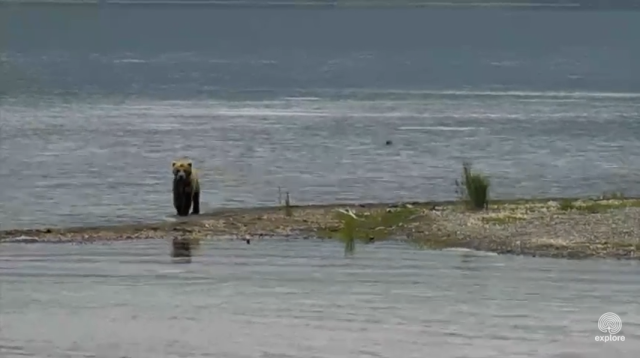Another day of watching the brown bears fish at Brooks Falls at Katmai National Park, on the live bearcam they have set up there. As I’ve mentioned before, this bearcam is set up at the same location as a wooden platform that is physically available for visitors of the park to stand and watch the bears fish live in person. This image, taken from the Google maps photo uploads, shows exactly how close the platform is to the falls, and how close the park visitors can get to where the bears are fishing:
This leads me to wonder how this proximity to humans might affect the food-gathering/fishing habits of the bears here at Brooks falls. As I’ve wondered in a previous post, it’s possible that bears less comfortable with the human presence might stay in the far pool to fish, or indeed, may not come to these falls to fish at all, but might prefer other, less desirable fishing spots along the river that are less likely to be visited by humans. I’ve noticed, when the sound is working on the cameras, that the visiting humans will tend to cheer when a bear catches a fish, similar to spectators watching s sports match. This could be distracting to the bears, or intimidating to them, or affect them in some other way. Bears more comfortable with the human presence might be more likely (or more able) to fish at the spots on the falls that are closer to the visitor’s platform, namely at the lip or the jacuzzi spots. These also seem to be the spots where bears are more likely to catch fish, in my observations. I have seen more bears catch fish (or bears catch more fish) at these locations than bears at the far pool or in the space between the jacuzzi and the far pool.













 The
The 
 Bear A stayed was at the far pool the entire time, but because of the darkness it was difficult to keep track of it as it moved around in that area, so I was not able to tell if it was able to catch any fish or not.
Bear A stayed was at the far pool the entire time, but because of the darkness it was difficult to keep track of it as it moved around in that area, so I was not able to tell if it was able to catch any fish or not.


